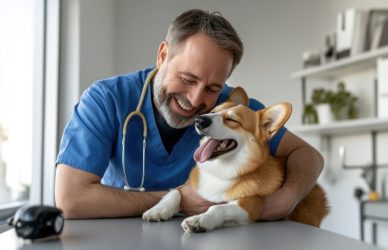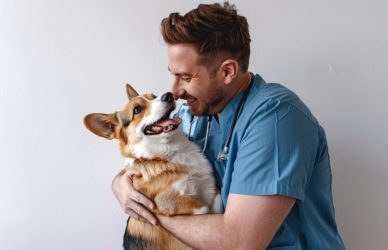As we celebrate World Veterinary Day 2025 on April 26th – with its aptly chosen theme “Animal health takes a team” – there’s no better time to reflect on the extraordinary evolution of the veterinary profession. This annual celebration, held on the last Saturday of April since 2000, recognises the contributions vets make to animal health, human wellbeing, and environmental stewardship.
The British veterinary profession has come a long way since its early days. What began as a small group of horse doctors has transformed into a sophisticated network of specialists caring for everything from gerbils to giraffes. This remarkable journey isn’t just about changing practices – it’s a story of how our relationship with animals has evolved over two centuries, and how teamwork has always been at its heart.
From Horse Sense to Royal Recognition
It all kicked off in the late 18th century when a forward-thinking group called the Odiham Agricultural Society decided animals deserved better medical care. They established the London Veterinary College in 1791, and just like that, British veterinary medicine was born.
Back then, the focus was firmly on horses and farm animals – not surprising when you consider that horses were essentially the cars, tractors and tanks of their day. A sick horse wasn’t just a personal tragedy; it could mean economic ruin for a family or business.
Recognition came quickly when the Army Board of Officers coined the term “veterinary surgeon” in 1796. But the real game-changer arrived in 1844 with the granting of a Royal Charter and the creation of the Royal College of Veterinary Surgeons. Suddenly, being a vet wasn’t just a job – it was a proper profession with standards and regulations. Thomas Turner, the first RCVS President, probably had no idea he was helping lay foundations that would still support the profession nearly two centuries later.
When “Dog Doctor” Was an Insult
Here’s something that might raise eyebrows at your next dinner party: well into the 20th century, calling someone a “dog doctor” was considered a professional insult among veterinarians. Imagine telling that to today’s small animal practitioners as they perform keyhole surgery on a Yorkshire Terrier!
The early veterinary establishment viewed pet care as distinctly beneath them. “If he is content to be spoken of as a ‘dog doctor’… he will need as much patience as a dressmaker or milliner with the sentimental owners,” sniffed one practitioner of the time. Such work was dismissed as unmanly, emotional, and frankly, a bit embarrassing.
Yet despite this professional scorn, a small band of pioneering vets in Edwardian London spotted an opportunity. These early canine specialists – dressed in frock coats and top hats as they examined the pets of the wealthy – were performing sophisticated surgeries and innovative treatments while their colleagues were still rolling their eyes. One of them, Alfred Sewell, even became something of a celebrity vet, travelling to examine the dogs of European royalty – much to the horror of the veterinary establishment.
Fighting the Big Ones
While some vets were busy arguing about the dignity of treating pets, others were tackling diseases that threatened national security. The identification of rinderpest (cattle plague) in London in 1865 led to the creation of Britain’s first state veterinary department. Suddenly, vets weren’t just animal doctors – they were guardians of public health and food security.
Perhaps the profession’s greatest triumph came through the work of Walter Plowright, whose vaccine development led to rinderpest becoming the first animal disease in history to be completely eradicated worldwide – and only the second disease ever, after smallpox!
The Nursing Revolution
Behind every great vet, there’s usually a team of even more organised veterinary nurses. But this crucial profession had humble beginnings.
The first Animal Nursing Auxiliaries only qualified in 1962 – surprisingly recent when you think about how essential vet nurses are to modern practice. By 1984, the title ‘veterinary nurse’ was officially adopted, and in 1991, their role received legal recognition.
Today’s vet nurse combines the skills of a radiographer, anaesthetist, laboratory technician, surgical assistant, nutritionist, grief counsellor and cat-whisperer – often all before lunch. The profession has transformed from informal assistance to a specialised discipline that keeps practices running.
Women to the Rescue
The story of women in the veterinary profession reads like a classic underdog tale. Aleen Cust completed her veterinary training in the 1890s but had to wait until 1922 to become officially recognised as a member of the RCVS. The profession dragged its feet for decades after that – Joan Joshua only became the first woman elected to the RCVS Council in 1953, and it took until 1976 for Olga Uvarov to become the first female RCVS President.
The real turning point came in 1989, when women graduates outnumbered men for the first time – a trend that’s continued every year since. Looking at today’s profession, where women make up the significant majority of practitioners, it’s hard to believe there was ever resistance. Those Victorian gentlemen who insisted veterinary work was too physically demanding for the “fairer sex” might be rather surprised by today’s female vets wrestling bulls, performing marathon surgeries, and running successful practices.
From Jack-of-All-Trades to Master of One
Today’s new graduate might be shocked to learn that vets once prided themselves on treating any creature that came through the door – from canaries to cows – often with the same limited toolkit. The modern profession embraces specialisation to a degree that would bemuse our predecessors.
Cardiology, ophthalmology, dermatology, neurology – areas once covered in a paragraph or two in veterinary textbooks now have their own diplomas, referral centres and specialist equipment. That former insult “dog doctor” has morphed into numerous prestigious specialisms, with small animal practitioners often at the cutting edge of veterinary innovation.
What This Means for Today’s Veterinary Recruitment
This colourful heritage has practical implications for anyone involved in veterinary recruitment today. The profession has always been shaped by a blend of scientific advancement, societal needs and economic reality – a balancing act that continues to challenge and inspire.
For practices looking to hire, this historical perspective offers valuable context. Today’s recruitment puzzles – finding specialists, addressing work-life balance concerns, or integrating new technologies – are simply the latest chapters in a story of continuous adaptation.
For veterinary professionals planning their next career move, the profession’s history shows its remarkable capacity for reinvention. Whatever challenges you’re facing, you’re part of a tradition that has overcome everything from world wars to pandemics, while continuously expanding its capabilities and influence.
What’s Next?
So where is veterinary medicine heading next? Several trends are emerging that echo historical patterns:
- Even more specialisation – Get ready for sub-specialties of sub-specialties as knowledge continues to expand exponentially
- Technology integration – From AI diagnostics to 3D-printed implants, technology will transform practice in ways that make today’s digital x-rays look positively Victorian
- One Health leadership – The profession’s unique position at the intersection of animal and human health places it perfectly for tackling tomorrow’s biggest health challenges
- Workplace revolution – The days of the 24/7 mixed practice vet are giving way to more sustainable and diverse working patterns
- Broader representation – The profession will continue to evolve from its historically narrow demographic roots to better reflect the diverse society it serves
How a Specialist Recruitment Partner Makes the Difference
Navigating this evolving landscape isn’t something you should tackle alone. At NSV, we’ve made it our business to understand not just what veterinary practice is today, but how it got here and where it’s going next.
For practices, we offer recruitment strategies informed by both historical perspective and cutting-edge insight. For veterinary professionals, we provide career guidance rooted in a genuine understanding of the profession’s storied culture and opportunities.
As we celebrate World Veterinary Day on April 26th, the theme “Animal health takes a team” couldn’t be more relevant to today’s veterinary landscape. We’re proud to support the teams that make modern veterinary care possible. Get in touch today to start the next chapter of your own story.


